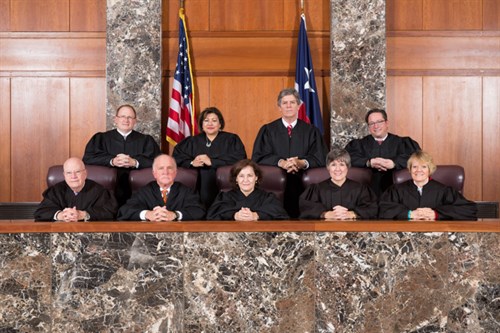
Changes to Texas Theft Laws | Fort Worth Theft Crimes Attorneys
 As the prices of gas and groceries rise, so must the theft laws in Texas. With House Bill 1396, the Texas Legislature has amended the Texas theft laws (and several other laws involving the monetary value of property), raising the monetary values of the property involved as follows:
As the prices of gas and groceries rise, so must the theft laws in Texas. With House Bill 1396, the Texas Legislature has amended the Texas theft laws (and several other laws involving the monetary value of property), raising the monetary values of the property involved as follows:
Theft Under $50Theft Under $100Theft $50 – $500Theft $100 – $750Theft $500 – $1,500Theft $750 – $2,500Theft $1,500 – $20,000Theft 2,500 – $30,000Theft $20,000 – $100,000Theft $30,000 – $150,000Theft $100,000 – $300,000Theft $150,000 – $300,000
The new values for these offenses will apply to all offenses committed on or after September 1, 2015. For offenses that pre-date 9/1/15, that theft offenses will remain under the old statutory scheme.
The New Value Ladder
The Texas Penal Code uses a standard value ladder in cases of theft and many other property and economic crimes to determine the grade of an offense. On September 1, 2015, HB 1396 changed the standard value ladder for theft in Texas—this is the first time this has happened since 1993. Under the value ladder, as the value of property lost increases, the seriousness of the crime increases. Below are the updated values:
- Under $100 is a Class C Misdemeanor;
- $100 or more, but less than $750 is a Class B Misdemeanor;
- $750 or more, but les than $2,500 is a Class A Misdemeanor;
- $2,500 or more, but less than $30,000 is a State Jail Felony;
- $30,000 or more, but less than $150,000 is a Third Degree Felony;
- $150,000 or more, but less than $300,000 is a Second Degree Felony; and
- More than $300,000 is a First Degree Felony.
The change in law also includes a savings clause. This clause provides that the change in law applies only to an offense committed on or after the effective date of the article. As such, an offense is committed before the effective date of the article if any element of the offense occurs before the effective date. This savings clause is an important factor when dealing with aggregate theft.
What is Aggregate Theft?
Aggregate theft is an offense where two or more thefts were committed “pursuant to one scheme or continuing course of conduct” and the amounts are combined to determine the grade of the offense. Tex. Penal Code § 31.09. Pursuant to Section 31.09 of the Texas Penal Code, aggregate theft may be considered as one offense—it is a sum of all its parts. The Court of Criminal Appeals has held that the State need only prove beyond a reasonable doubt that the defendant unlawfully appropriated enough property to meet the aggregated value alleged. Since the value alleged will determine the grade of offense charged, applying the correct statute is essential.
How Does the New Value Ladder Apply to Aggregate Thefts?
The Court of Criminal Appeals has held time and time again that we are to interpret statutes in accordance with their plain meaning unless the language is ambiguous or the plain meaning would lead to absurd results. Thus, applying the plain meaning of the savings clause found in Section 31.09, the former law’s penalties apply to the offense of aggregated theft if any element of a continuing theft was committed before the effective date of the new law. The Court of Criminal Appeals held that this “interpretation does not lead to absurd results because one could reasonably conclude that the legislature intended for the old penalties to attach to a scheme or continuing course of conduct that was begun before the effective date of the new law.” Dickens v. State, 981 S.W.2d 186, 187-88 (Tex. Crim. App. 1998). Thus, if a defendant is being charged with aggregate theft and any element of their charge occurred before September 1, 2015, former law will apply to determine the grade of the offense.
Theft Crime Defense Lawyers | Fort Worth Criminal Defense Firm
The Fort Worth criminal defense attorneys at Barnett Howard & Williams PLLC handle all ranges of property crimes from simple shoplifting to armed robbery and everywhere in between. If you are under investigation for a property or theft offense or have already been charged, contact Barnett Howard & Williams PLLC today for a free consultation of your case at 817.993.9249.


 If you’ve ever gone through a home renovation or something similar, you have likely experienced periods of frustration with your contractor or construction crew. This may stem from missed deadlines, shoddy workmanship, mistakes, or general incompetence. In extreme cases, you might have felt duped by the contractor, so much that you think he should be held criminally liable for the promises on which he failed to deliver.
If you’ve ever gone through a home renovation or something similar, you have likely experienced periods of frustration with your contractor or construction crew. This may stem from missed deadlines, shoddy workmanship, mistakes, or general incompetence. In extreme cases, you might have felt duped by the contractor, so much that you think he should be held criminally liable for the promises on which he failed to deliver.
 Below is a case update from the 5th Circuit (Federal)
Below is a case update from the 5th Circuit (Federal)
 The CCA handed down two opinions today dealing with legal sufficiency of evidence.
The CCA handed down two opinions today dealing with legal sufficiency of evidence. 
 Section 32.31(b)(1) of the Texas Penal code provides that a person commits the offense of Credit Card Abuse or Debit Card Abuse if that person “presents or uses” a credit/debit card that was not issued to him and is not used with the owner’s consent. But what does it mean to “present” or “use” a credit/debit card? Can someone “present” a credit/debit card without “using” it?
Section 32.31(b)(1) of the Texas Penal code provides that a person commits the offense of Credit Card Abuse or Debit Card Abuse if that person “presents or uses” a credit/debit card that was not issued to him and is not used with the owner’s consent. But what does it mean to “present” or “use” a credit/debit card? Can someone “present” a credit/debit card without “using” it?
 Byrd v. State
Byrd v. State





